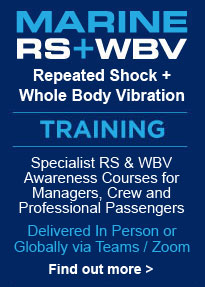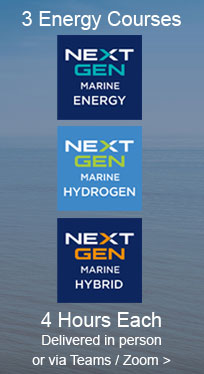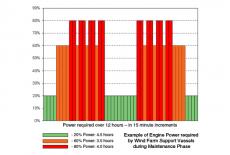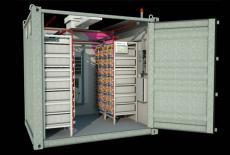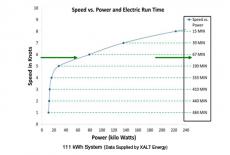Hybrid Technology for Commercial and Military Vessels

05.01.2021
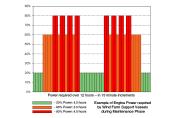
Hybrid Technology for Commercial and Military Vessels
Hybrid technology is being utilised by many transport sectors around the world. The marine industry is now recognising the potential of utilising hybrid power and innovative propulsion systems.
Certain maritime sectors are potentially well suited to hybrid systems. These include ferries, pilot boats, workboats that have relatively consistent duty cycles.
Green Energy and Military Power
For military applications hybrid systems, including diesel / battery / electric, will give patrol vessels the ability to turn off their main engines then loiter silently on station at sea with a low heat signature. Military training exercises and actual manoeuvres that require command and control from slow moving or stationary vessels could utilise stored energy from high energy battery systems.
Patrol vessels will still use their main engines to move rapidly from point to point, then once in position a vessel can patrol slowly on battery electric power. This will be particularly relevant to vessels undertaking port or estuary patrols at low speeds. Stealth and the element of surprise have many applications for customs, borders and fisheries protection. Hybrid and battery / electric systems are relevant to autonomous vessels.
Certain military sectors are potentially well suited to hybrid diesel / electric systems. Riverine operations could benefit from a silent running mode when patrolling or transiting towards an area of interest. For specialist operations, boat teams could utilise stored energy to approach the target in silence. Once the energy is onboard, engine designers could also configure the main engines to use extra kilowatts of battery power to create an increased top speed for short bursts.
Hybrid Power for Security Roles
As the requirements grow for 24/7 security in many ports and waterways Unmanned Surface Vehicles (USV) will be considered for various roles and the drivers for rapid technology development are significant. As no crew changes are required USVs can remain at sea for days at a time. As diesel engines were not designed for ‘start – stop’ operation, hybrid systems that enable USVs to use stored energy will be a viable solution.
At the start of a mission batteries can be fully charged from shore power or the mother vessel. During the mission batteries can receive their main charge from a diesel generator, with a secondary charge from solar power. In the near future alternative sources of energy, including wave action, will provide free sustainable energy sources that can be utilized to sustain unmanned vessels for extended duration roles at sea.
Stored Energy & Diesel /Eelectric Systems
Submarines have utilised batteries and stored energy for many years. Diesel / electric systems have been used in older ships but these are not hybrid systems. The diesel / electric vessel uses its engines to connect directly to an electrical generator, the power in the system is then transferred electrically to the propeller shaft via a motor controller and electric motor. The system may have multiple generators and multiple motors but until recently there was no storage of electric energy.
Emissions and the Balance of Power
On 1 January 2015 Emission Control Areas (ECA) came into effect for USA, Canada, North Sea and Baltic...
Separate to the IMO regulations, China has voluntarily imposed ECAs in effort to reduce pollution. Options to reduce emissions include exhaust cleaning ‘scrubbers’. Some operators that infrequently visit ECAs may make a commercial decision that it is cheaper to be fined than to comply. However this is not a viable option for ferries and cruise ships that make regular visits to ports.
The traditional operating model for shipping is moving goods from point to point as fast as possible. When ‘slow steaming’ is introduced the vessels speed is slowed down in order to lower costs by reducing fuel consumption. The requirement for ‘power’ is also changing for many professional small craft operations. As new technologies evolve the balance of power onboard is evolving and there are now more important considerations than pure speed. Objectives include power trains that do not fail, redundancy, extended operating range, reduced operating costs, improved fuel economy and environmental compliance in port.
Selecting Hybrid for Efficiency
The professional marine sector is entering a period of rapid change and commercial opportunity. Boat builders, engine manufacturers, technology designers and naval architects are now developing hybrid systems for workboats, pilot boats, tugs, survey vessels, patrol vessels, superyacht tenders and unmanned craft. Benefits include improvements in energy reliability, increased fuel efficiency, lifecycle cost reductions and reduced emissions.
Not all vessels are suitable for hybridization. It is important to use a consistent process of quantifying and classifying operating conditions and the work / engine cycle. This helps to identify which duty cycles hybrid solutions are most relevant for and which sectors may be first adopters.
With vessel life cycles of over 20 years, naval architects and builders of new craft will offer designs that have space and access routes to enable retrofit of hybrid installations. Focus is now on the sub IMO / sub 80 feet (24 metre) workboat, pilot boat and patrol craft sectors to investigate the engineering and systems integration required to bring together viable and sustainable solutions.
The Hour Of Power
The Hour Of Power is a hybrid concept using a combination of diesel / electric / battery, that enables a vessel to use conventional diesel engines and propulsion system, charge batteries when running diesels, charge batteries from shore power, run on battery / electric for up to one hour or loiter on battery for significantly longer. The concept enables vessels to run in and out of port for an hour on electric with battery power and then carry out their open sea work on diesel power. The aim of this hybrid solution is to enhance conventional power and propulsion systems. Vessels can reduce emissions and improve fuel consumption, whilst extending engine maintenance periods and overall engine life.
The Hour Of Power focuses on hybrid solutions linked to viable business cases. This is not just green energy for the sake of it. Many commercial harbours around the world have 10 knot speed limits for low wash or safety reasons and are within one hour of sea. For commercial and professional organisations the simple concept of running vessels with zero emissions around ports will shape decisions that lead to improvements of in-service systems and procurement of next generation vessels. The overall objective is fuel saving and improved efficiency by all means.
Metrics and The Hour Of Power
There are various methods to determine the most efficient speed for a vessel to travel at on battery / electric power. Naval architects can model this specifically vessel by vessel, but to enable operators to identify approximately how many kilowatts of alternative energy they may need to bring onboard there are simple methods. One of the main criteria that enables battery / electric power to work efficiently is to operate the vessel below both ‘hump’ speed and ‘hull’ speed. The start of the hump is beyond the point where the boat exceeds its displacement hull speed.
The hump is clearly defined on the speed / resistance curve for any size of vessel. As speed increases a fuel meter shows fuel consumed, which will significantly increase at the hump. Another source of information is to generate a speed / power curve from the engine management system that shows how many Kilowatts of energy are consumed at a particular speed. For the sake of simple calculation this should be done in zero
current and zero wind conditions. Separate allowances can be made for favourable or opposing current and or wind. The main objective is identifying how many Kilowatts of battery energy are required to replace Kilowatts of diesel energy.
Hybrid Opportunities for Wind Farm Service Vessels
Certain maritime sectors are potentially well suited to hybrid diesel / electric systems. These include pilot boats and wind farm support vessels undertaking maintenance. Both have relatively consistent duty cycles, often running seven days a week, to drop off or collect pilots and technicians. If wind, wave and tidal energy installations are striving for genuine ‘green’ credentials it is logical to reduce consumption of fossil fuels wherever possible. Focus is now on indentifying the engineering and systems integration required to bring together viable and sustainable solutions for these vessels.
A typical working day starts with the WFSV crew preparing the vessel for departure at 06.00. The vessel would be disconnected from shore power which has been used for overnight battery charging. The vessel can leave the dock and harbour on battery / electric power, which also means zero emissions. At the outer sea buoys diesel power takes over for the high speed transit out to the wind farm and to deliver the technicians onto the wind turbines, during this time the batteries are re-charging.
Many vessels have hours of waiting in the wind farms, as they are on standby they cannot anchor. Loitering at low speed and low revs is not an efficient load cycle for diesel engines, plus it leads to increased maintenance and reduced engine life. This loitering period could be on battery power. Later in the day diesel power is used for the high speed transit back to port, the batteries are re-charging. At the outer sea buoys battery electric power takes over to enter the harbour, with zero emissions. Around 18.00 the vessel returns to the dock where shore power is re-connected for overnight charging.
Next Generation Cells and Batteries
US battery manufacturer XALT Energy has the experience of taking high voltage battery projects from concept through cell production into the finished system for maritime applications. The company are working with boat builders, naval architects and marine operators to analyse different workboat duty cycles.
Robert Young, Technical Lead for Marine Applications at XALT Energy said, ‘Engine management data can be matched to battery characteristics to develop the most efficient solutions. Onboard energy management systems are designed to ensure that battery systems operate at optimum performance. The objective is hybridizing and electrifying marine vessels to produce financial benefits and reduced emissions. The design objective is specifying complete systems with power discharge / charge capabilities that are most efficient for their expected use.’
The company are designing Lithium-ion battery systems that consider the footprint, weight, cost benefits and safety case for marine applications. Systems are modular and can be scaled to suit energy levels required.
Installing Batteries can Increase Redundancy
Professional boat operators around the world have learned that power and performance are relevant, but reliability and durability are important factors for all types of engine and propulsion. A vessel with battery / electric capability linked to two main engines, one generator and a battery bank has various power options that greatly improve redundancy and get home capability.
Banks of batteries can be permanently installed in each hull on catamarans. For workboats designed to carry ISO containers, an alternative would be to create portable energy units that could be carried on deck. As many workboats are designed to have modular payloads this would enable containers to be moved between vessels as changing duty cycles, or contracts with green credentials, require alternative energy onboard.
Looking To The Hybrid Future
The IMO Energy Efficiency Design Index (EEDI) aims to reduce emissions from large ships by 30% between 2014 and 2025. Countries developing new green energy policies may want to enter the offshore wind, tidal and wave energy sectors by specifying vessels that harmonise with the global reduction in the use of fossil fuels.
Class rules, safety, performance and cost are relevant to naval architects when considering innovative battery power and diesel electric propulsion systems. The challenge for designers is to engineer solutions utilising hybrid technology which are affordable plus manageable in terms of physical size, weight and maintenance.
As new sources of energy become available it is important to identify which energy source best fits the vessel, duty cycle and environment to give efficient power when it is needed. Since no two vessels, routes or captains are alike, decisions can be improved with data logging and analysis. Commercial Off The Shelf (COTS) power management systems will bring together diesel / electric / battery and smart data to create optimised whole vessel hybrid systems.
As ocean going shipping, automotive, transport and aviation move rapidly towards hybrid solutions it will be interesting to see how commercial and military small craft decide to utilise the numerous opportunities.
By John Haynes
All images are copyright Shock Mitigation 2024 unless otherwise stated.
This does not exclude the owner's assertion of copyright over the material.

eNews
09.07.2024
NEXT GEN Marine BATTERY Workshop via Teams
NEXT GEN Marine BATTERY Workshop is being held via…
Events
Southampton International Boat Show 2024
Dates:
13 to 22 September 2024
Location:
Southampton UK
eArticle
06.10.2023
Challenges of Unpredictable Marine Energy
From running Energy Transition training for significant maritime organisations technology…
Video
Round The World solar boat Turanor PlanetSolar
MS Tûranor PlanetSolar is the largest solar boat in the world. This 35 metre (115 feet) catamaran operates solely on…






